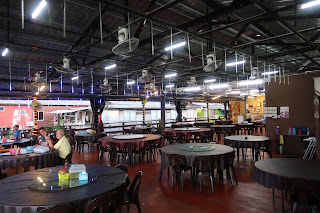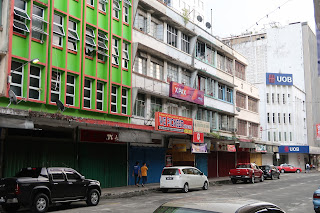28th Oct
Like all coastal towns in Sabah, the oldest industry is fishery. Sandakan is no different, there is a fishing port and piers for fishing boats to berth and unload their catches and load up the logistics needed for going out to sea.
The boats are old, dirty and untidy unlike fishing boats in the Europe. The hulls are wooden and paint are spalling. The jetties in the 4 towns I had visited have similar characteristics, dirty and the foul smell of fish is unmistakable. The wooden jetty are in need of repairs.
The pier also served people moving to and from of nearby islands inhabited mainly by native "orang laut" of people of the sea. Small boats mounted with outboard motors are used ferry both people and goods..
Like all the towns I have been, there is a main fish market adjacent to the jetty where fish mongers sell wide varieties of fish and crustaceans.
And nearby this fish market there will always be a pasar or wet markets. Outside the market there will be vendors selling daily necessities along any available spaces along the road sides.
Around the city
This is the old city of Semporna. According to an old resident I spoke to, the city has not changed much for the last 30 to 40 years. Large number of immigrants from nearby Philippines has put stress on the city. Sandakan is a Chinese dominated city. Unfortunately the Chinese have moved out and settle in nearby satellite towns. All Chinese restaurants and eateries had move out to the suburbs.
Restaurant King Cheong, traditional Chinese kopitiam and also serve tim sum in the morning. Its the only noticeable Chinese left in the old city. Tim sum are sold on push cart. The shop closed in late afternoon,
Many people are already eating or moving around the street. The people here start early. In the evening, shops are shuttered by 5 pm and the streets become quiet except those closer to the waterfront and restaurants. The sunset here is earlier. By 6.30pm its already dark.
This is 5 pm and the shop are closed.
Sandakan Sunday Market.
Outside the hotel where I stayed, the roads are closed to cars every Sunday morning. Vendors stretched the entire "Jalan Dua' with the usual wares as one would see in "pasar malam".
Hotel Central I stayed for 4 nights



































































